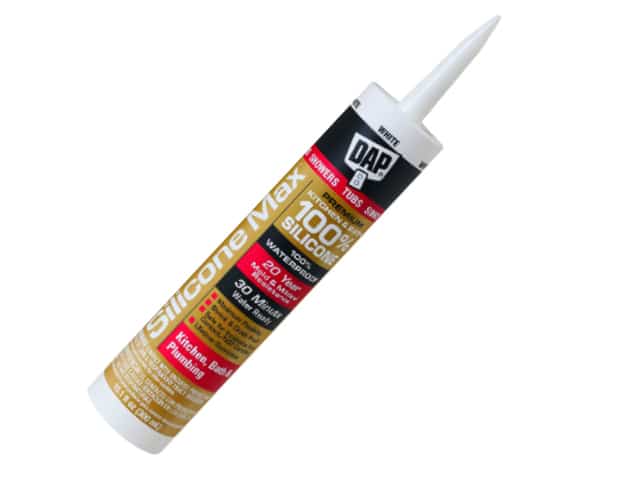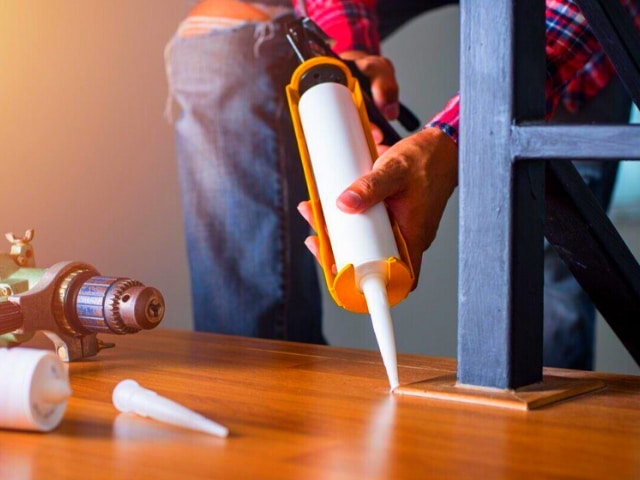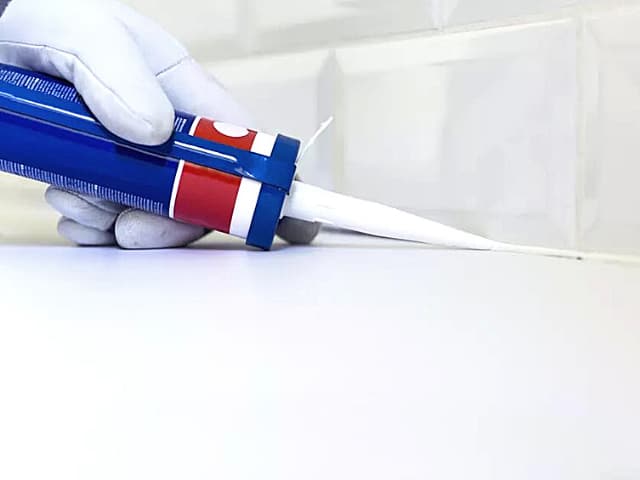In the vast sea of home improvement and construction materials, it’s easy to get swamped. Various silicones are available, each with unique properties that make them well-suited for specific tasks.
Among these, silicone adhesive and silicone caulk are two popular types. But how to decide which one to go for? This is where we step in, presenting you with a detailed lowdown of silicone adhesive vs. silicone caulk.
Read More: Best Silicone Adhesive For Plastic
Read More: Acrylic Vs. Silicone Caulk
Silicone Adhesive vs. Silicone Caulk
What is Silicone Adhesive?
Let’s start with silicone adhesive. To put it simply, think of it as the Superman of Glues. It’s a versatile bonding agent renowned for its impressive strength and durability. What makes it special? The answer lies in its inherent properties.
Its excellent adhesion strength makes it a go-to material for projects demanding high bonding strength. It can withstand high temperatures (up to 600°F), giving it a distinct advantage in extreme conditions.
Due to its strong resistance to moisture, the silicone adhesive doesn’t shy away from water or adverse weather conditions either. It’s commonly available in a tube, often needing a caulk gun for application.
Its applications span several industries, including construction, automotive, and electronics. Silicone adhesive has covered you, from attaching a mirror to a wall to sealing a pipe leak.
Read More: Can Silicone Sealant Be Used As An Adhesive?
What is Silicone Caulk?
On the flip side of the coin is silicone caulk. Picture it as the all-purpose handyman of sealants. It primarily fills gaps, cracks, and joints, providing a seal that keeps unwanted elements like water, air, or dust out.
Silicone caulk is durable, flexible, and weather-resistant, ticking all the boxes for indoor and outdoor applications.
Its versatility is amplified by the array of types it comes in, each possessing unique properties tailored for different uses. The type of silicone caulk you’d use for a bathroom project might differ from what you’d use to seal windows.
So, whether it’s caulking a bathtub or sealing a kitchen sink, silicone caulk is a reliable sealant option.

Difference Between Silicone Adhesive and Silicone Caulk
Understanding the differences between silicone adhesive and silicone caulk is critical for making an informed decision. While both these silicones seem similar, their intended applications vary.
Silicone adhesive is primarily about binding materials together, acting as a strong bonding agent. Silicone caulk, on the other hand, is all about filling and sealing spaces, acting as a flexible filler.
The way these materials behave after application is a key distinguishing factor. Silicone adhesives are often more rigid after curing, making them suitable for heavy-duty bonding applications. On the contrary, silicone caulks maintain their flexibility even after curing, making them perfect for sealing applications where materials may need to expand or contract.
Furthermore, the type of silicone used in each varies. Silicone adhesives generally utilize a more concentrated form of silicone, enabling a stronger bond. Silicone caulk, however, uses a less dense form of silicone, providing a more malleable and user-friendly experience.
Read More: Best Adhesive For Undermount Sink To Granite

How to Determine What You Need On Silicone Adhesive vs. Caulk?
Choosing between silicone adhesive and silicone caulk can feel like a daunting task. However, the key lies in understanding your project requirements. Let’s dissect this further.
For Interior Or Exterior Applications?
Both silicone adhesive and silicone caulk excel in interior and exterior applications. Their weather-resistant and water-resistant properties equip them well for various scenarios. If your project involves attaching heavy materials together, silicone adhesive’s robust bonding power makes it a worthy contender.
Application Method
How these materials are applied could sway your decision. Silicone caulk typically offers a more straightforward application process. It’s easily applied using a caulk gun and doesn’t require any mixing. However, if your project demands a stronger, more enduring bond, then the slightly more complex application process of silicone adhesive could be worth the extra effort.
You may want to try our silicone adhesive; it provides greater flexibility than silicone caulk. Remember that these products are easy to work with, durable and versatile. They can be used in countless projects around your home!

Is Silicone Adhesive The Same As Silicone Sealant?
Is Adhesive Better Than Caulk?
Silicone adhesive excels when you need a strong bond, often used for joining heavy materials. Conversely, silicone caulk is ideal for sealing gaps and cracks, providing a flexible and water-resistant seal.
In a nutshell, the adhesive isn’t inherently better than caulk, or vice versa. The best choice is the one that aligns with your project’s needs.
What are the advantages of silicone adhesive?
A standout characteristic of silicone adhesive is its resistance to water and adverse weather conditions. This makes it an excellent choice for outdoor applications or projects in moisture-prone areas, such as kitchens or bathrooms.
The adhesive retains some flexibility after being cured, allowing it to absorb shocks and vibrations. This makes it a good fit for situations where the bonded materials may experience some movement.
Moreover, silicone adhesive is known for its longevity. Once cured, it provides a durable, long-lasting bond that resists degradation from environmental factors.
Finally, it is a non-corrosive adhesive, meaning it doesn’t damage the materials it bonds, making it safe for a wide array of materials.
In essence, the advantages of silicone adhesive lie in its strength, resilience, and versatility, establishing it as a reliable go-to for many bonding applications.
Last Opinion
In the face-off of ‘Silicone Adhesive vs. Silicone Caulk,’ the winner truly depends on your specific project and its needs. Both have their own strengths and excel in their respective applications. It’s not about finding the ‘better’ but the ‘right’ one.
With this comprehensive understanding of silicone adhesive and caulk, you can now make an informed decision. So, consider these two mighty silicones the next time you find yourself in a sticky situation. Your perfect solution might be right around the corner.
